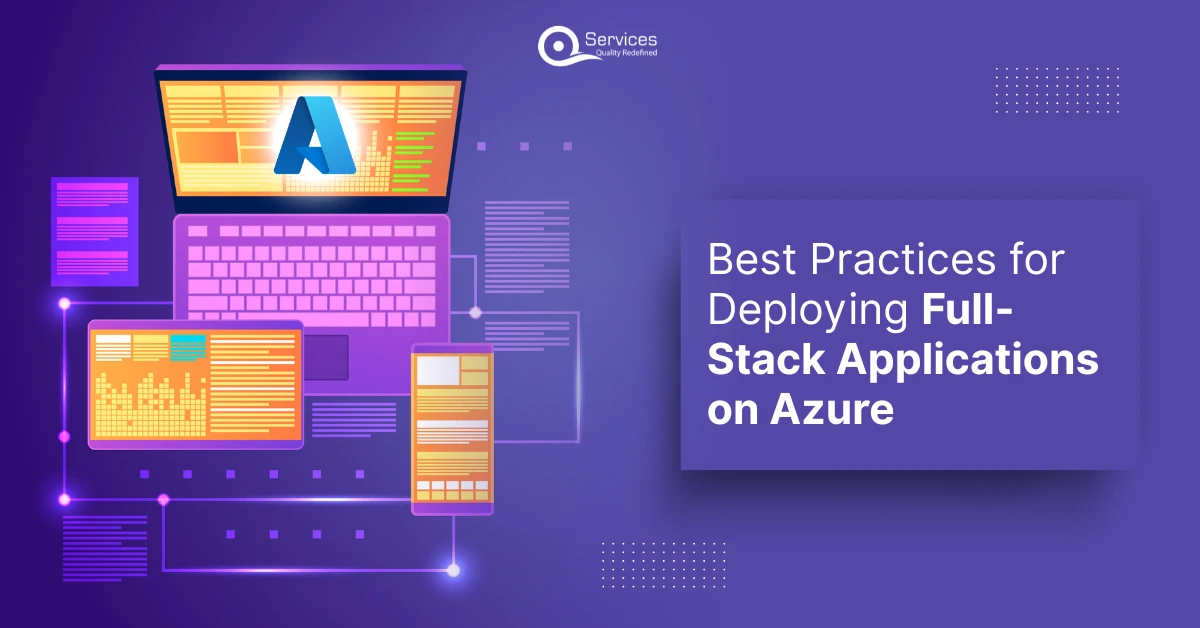
Rewards
.





CANADA
55 Village Center Place, Suite 307 Bldg 4287,
Mississauga ON L4Z 1V9, Canada
Certified Members:
.



Home » Dynamics 365 Business Central Implementation Guide: 8 Steps for Oil & Gas ROI (2025)
![Dynamics 365 Business Central Implementation Guide 8 Steps for Oil & Gas ROI [2025]](https://www.qservicesit.com/wp-content/uploads/2025/03/Dynamics-365-Business-Central-Implementation-Guide-8-Steps-for-Oil-Gas-ROI-2025-.webp)
Businesses today need smart tools to run smoothly, cut costs, and make better decisions. One such tool is Microsoft Dynamics 365 Business Central, which helps small and mid-sized businesses manage everything from finance to operations in one place. But what makes it so useful, and how can companies get the most out of it?
In this guide we will explore each step of a successful Microsoft Dynamics 365 Business Central implementation, helping you switch from older systems without hassle. We will certainly help you maximize ROI in oil and gas with Dynamics 365 Business Central.
Before we jump into the Dynamics 365 Business Central implementation process, let’s look at why this system stands out.
It connects finance, sales, operations, supply chain, and customer service into one system.
Businesses can adjust and expand the system as they grow.
Since it runs on Microsoft Azure, it offers easy access, security, and real-time updates.
Specific Solutions – Whether you’re a startup or a large company, Business Central can be customized to fit different industries, including oil and gas industry ERP solutions with Business Central.
A properly planned Microsoft Business Central implementation can save money and improve work efficiency.
Making – Real-time reports and AI-based insights help businesses make smarter choices.
Streamlining oil and gas processes with Microsoft Dynamics 365 Business Central ensures companies can track daily tasks, inventory, and customer needs easily.
With Dynamics 365 Business Central customization for oil and gas operations, businesses can adjust the system to fit their requirements.
Business Central has built-in tools to help companies follow industry rules.
Further, we’ll explore how to plan properly before starting the Business Central implementation process to ensure success.
Setting up Microsoft Dynamics 365 Business Central properly is key to getting the most out of it. Jumping in without a plan can cause delays, extra costs, and confusion. That’s why businesses should take the time to prepare before starting the process.
Below, we’ll go through the eight key steps businesses in the oil and gas industry should follow to successfully set up Microsoft Dynamics 365 Business Central and see strong financial benefits.
This section covers the essential steps to make Dynamics 365 Business Central implementation for oil and gas companies easy and stress-free in 2025.
Before making any decisions, ask yourself:
For example, companies in the oil and gas industry may struggle with tracking inventory, managing supply chains, or handling finances. A clear goal helps businesses get the best results from the Oil and gas industry ERP solutions with Business Central.
It has its own different versions and features to fit businesses of all sizes. As some companies need a full-featured solution, while others prefer a simpler setup.
For industries with special needs, like oil and gas, Dynamics 365 Business Central customization for oil and gas operations makes sure the system works for your business instead of forcing you to change the way you work.
A well-prepared team makes the process easier. The key people you’ll need include:
Keep things organized and on schedule.
Set up and integrate the system.
People who will use the system daily and give feedback.
If you don’t have an IT team, working with a trusted Microsoft Business Central implementation partner can save time and effort.
One big mistake companies make is transferring old, inefficient processes into the new system without making improvements first. Before implementing Dynamics 365 Business Central, businesses should take time to analyze their current workflows.
For the oil and gas industry, this could mean checking how assets are tracked, how inventory is managed, or how financial reports are created. Identifying areas that can be streamlined will help the company get the most out of the new system. If this step is skipped, businesses might end up using a powerful tool but not taking full advantage of it.
Rolling out Dynamics 365 Business Central takes time and money. To avoid surprises:
A standard, one-size-fits-all approach won’t work. Microsoft Dynamics 365 Business Central needs to be adjusted to fit the custom needs of the oil and gas sector, such as compliance tracking, managing equipment lifespan, and handling changing costs.
For example, Companies can streamline processes by using Business Central to automate their taxes, track finances in real time, and set up approval steps for making any major investments.
Transferring financial, business, and customer data into Dynamics 365 Business Central requires attention to detail. If errors or duplicates slip through, they can lead to mistakes and slow things down.
To avoid these issues, companies should clean up their data beforehand by removing outdated records and making sure everything is in the right format. Running test transfers first can help spot problems early. Since oil and gas businesses depend on accurate historical data, keeping data clean and error-free is crucial for making smart decisions.
Even the best ERP system won’t be useful if employees don’t know how to use it properly. Many businesses overlook training, which can lead to confusion and slow adoption. A comprehensive training plan is to ensure a smooth transition.
Creating a Dynamics 365 Business Central user guide that focuses on industry-specific functions—like compliance tracking, contract management, and cost analysis—can help employees learn quickly. Hands-on workshops, role-based training, and ongoing support will make sure employees feel confident using the system.
By following these eight steps, businesses can successfully integrate Business Central and get the most value from their investment in 2025.
Get free Consultation and let us know your project idea to turn into an amazing digital product.

Getting Microsoft Dynamics 365 Business Central set up is just the first step. To get the most out of it, businesses need to follow smart strategies that make the transition easier and ensure long-term success. Here are some simple but effective ways to make sure your system runs smoothly and delivers real value, especially for industries like oil and gas.
Even the best software won’t help if people don’t know how to use it. Training is not just something you do once—it should continue as your business grows.
For industries like oil and gas, where smooth operations are critical, knowing how to make the most of Dynamics 365 Business Central customization for oil and gas operations is a must.
Every company works differently, so the system should match your specific workflow. Microsoft Dynamics Business Central implementation allows you to customize it to work the way you need.
For oil and gas businesses, streamlining oil and gas processes with Microsoft Dynamics 365 Business Central can make day-to-day tasks much easier and more efficient.
Data is one of the most valuable things a company owns, so keeping it safe should be a top priority. Follow these steps to ensure security:
For oil and gas businesses, Dynamics 365 implementation guide and best practices should include making sure they meet all necessary safety, environmental, and financial regulations.
A successful setup isn’t just about getting the system running—it’s about making it work efficiently. Maximizing ROI in oil and gas with Dynamics 365 Business Central means:
Business Central ROI optimization strategies for oil and gas businesses, ensures that they get the highest return on their investment.
An ERP system isn’t something you set up and forget. It needs regular updates and improvements to keep running smoothly.
With the right approach, businesses can fully benefit from Microsoft Dynamics 365 Business Central implementation to boost efficiency and long-term growth.
Implementing this can bring many benefits, but it also comes with challenges. Oil and gas companies often struggle with system integration, following industry rules, and helping employees adjust to new software. If these challenges are not properly handled, they can slow down the process and reduce the return on investment (ROI) from Business Central.
Now, we will discuss the common challenges companies face during Dynamics 365 Business Central implementation and how to overcome them.
People often resist change, especially when moving from an old system to a new one. If employees do not get the right training and support, they may not fully use Dynamics 365 Business Central, which can lead to mistakes and slow processes.
Solution:
One key problem during setup is transferring data from the old system. If crucial financial or operational details go missing or are copied incorrectly, it can lead to serious troubles.
Solution:
Oil and gas companies use advanced specialized software to track equipment, manage safety rules, and handle all the finances. It’s important that Dynamics 365 Business Central works well with these tools.
Solution:
The oil and gas industry operates under strict regulations. Setting up Business Central the right way helps many businesses stay compliant and avoid fines.
Solution:
Assuming employees will just “get” Business Central can backfire—without training, mistakes pile up and work slows down.
Solution:
Once Business Central is up and running, companies need to track whether they are seeing the expected financial and operational benefits. Without regular monitoring, they may miss ways to improve.
Solution:
Share your project idea with us. Together, we’ll transform your vision into an exceptional digital product!

Using Microsoft Dynamics 365 Business Central in the oil and gas industry can make work easier, improve financial tracking, and increase profits—if done right. With proper planning, employee training, and problem-solving, companies can switch smoothly.
A well-executed Dynamics 365 Business Central implementation allows oil and gas companies to work more efficiently, reduce errors, and make smarter financial decisions. The key is to take it step by step while keeping business goals in mind.
If your company needs expert help with Microsoft Dynamics 365 Business Central implementation, QServices- Process Automation Partners offers customized solutions to fit your needs. Contact us today to make your ERP transition smooth and successful.
The oil & gas industry can benefit from streamlined operations, improved financial management, enhanced supply chain visibility, and better compliance with industry regulations.
Key features include financial management, project management, supply chain management, inventory control, and compliance tracking.
By optimizing business processes, reducing operational costs, and providing actionable insights, companies can achieve higher efficiency and profitability.
The 8 steps are: Understanding Business Central, Pre-Implementation Planning, Analysis, Design, Development, Testing, Deployment, and Post-Implementation Support.
This phase involves defining objectives, assembling a project team, budgeting, and developing a detailed timeline with milestones.
A gap analysis identifies the differences between current processes and Business Central capabilities, helping to plan necessary customizations.
Customizations may include specific financial reporting, project management features, and compliance tracking tools.
Use data validation techniques, perform thorough testing, and ensure accurate mapping of data from legacy systems to Business Central.
Best practices include clear communication, thorough planning, involving key stakeholders, and continuous monitoring and improvement.
Success can be measured by achieving predefined objectives, user satisfaction, system performance, and ROI.
Common challenges include resistance to change, data migration issues, and aligning the system with business processes.

In the healthcare industry, managing and securing sensitive patient data is paramount. With the increasing adoption of cloud technologies, healthcare organizations are leveraging platforms like Microsoft Azure to store, process, and analyse healthcare data. However, with this shift comes the responsibility

The combination of Microsoft AI, Azure Health Insights, and Azure Cognitive Services is transforming healthcare by allowing smarter and efficient decision-making based on data. These technologies can fundamentally change the conventional practices of healthcare by taking new approaches to enhance

Healthcare is undergoing a massive shift thanks to new technologies. Think cloud computing, artificial intelligence (AI), and the tools developers use to build websites and apps. Hospitals and doctors’ offices are all trying to get better at caring for patients, running more smoothly, and keeping data safe. That’s why using Microsoft tech and Angular together has become a popular way to build modern, easy-to-use digital healthcare solutions.
Schedule a Customized Consultation. Shape Your Azure Roadmap with Expert Guidance and Strategies Tailored to Your Business Needs.
.





55 Village Center Place, Suite 307 Bldg 4287,
Mississauga ON L4Z 1V9, Canada
.




Founder and CEO

Chief Sales Officer

🎉 Thank you for your feedback! We appreciate it. 🙌